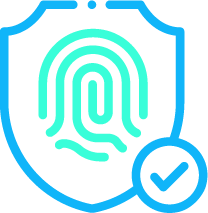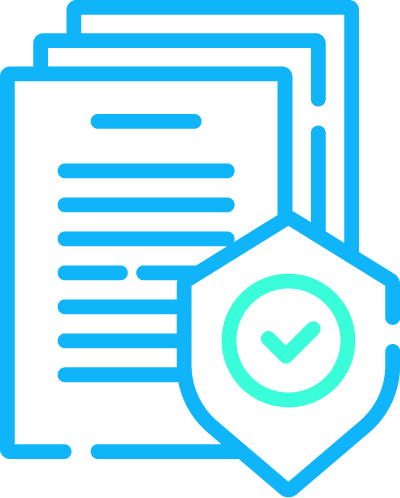Integrated Identity for Endless Possibilities
The REL-ID platform acts as a complete, integrated security and identity solution that removes the risk of malware and network or credential compromise from the moment you start interacting with a client. Uniken’s mobile-first approach binds every client with a unique and client-invisible private-private key pair that assures with algorithmic certainty that your client is the person interacting with your business. Remove the burden of security and authentication from every customer journey and discover the possibilities for growing your business.
Discover the possibilitiesAlways Amazing.
Once Uniken’s REL-ID platform software development kit (SDK) is embedded into your mobile application, the following occurs each time the app is opened:
- Robust mobile threat detection is triggered, evaluating for the presence of known and polymorphic malware, malicious Wi-Fi, and adversary-in-the-middle (AITM) compromise.
- Six-layer mutual multifactor authentication occurs, at the center of which is a private-private key pair that cannot be socially engineered, phished, or compromised. This authentication process ensures that you always have algorithmic certainty of the user, device, and connection to your organization’s systems.
Uniken’s at-rest API capabilities allow your business to trigger strong customer authentication (SCA) across any channel. Deploy the customer flows you want with amazing speed, simplicity, and customer experiences that unlock possibilities for your business.
Imagine no more passwords, account reset hurdles, and tiresome call-center questions to prove who users are, and no more website visitor experiences that require tedious steps. Instead, just simplicity and consistency — every time, all the time, across any channel.

Mobile Threat Detection (MTD)
Protect clients against cyber threats in real-time to ensure they can safely access services from anywhere, anytime, through any channel. REL-ID secures every interaction at the device with root, jailbreak, malware detection, and USB debugging, at the application by checking apps for tampering and preventing malicious app hooking, and throughout the network with defense against rerouting, adversary-in-the-middle, and replay attacks. REL-ID also encrypts the channel for communication to ensure that data flows safely from customer to business and back. And once installed, REL-ID MTD runs every time the app is opened. If a device is corrupted, you’ll be notified.

Customer Identity Verification / Rapid Onboarding
REL-ID includes a robust web or mobile identity verification process at no additional cost. Onboard a new user within minutes with full document verification for over 12,000 ID types from 247 countries and iBeta Level 2 passive liveness detection with no human intervention. REL-ID also creates a secured biometric template that can be validated for step-up server-side biometric authentication for high-risk events, possible fraudulent transactions, or even annual proof-of-life verification for pensioners and account holders.

Omnichannel Authentication
Shut down every major vector of fraud with comprehensive, mutual multifactor customer authentication that is both seamless and invisible to your clients. The first time a client opens your app, REL-ID creates a private-private key pair that is central to the customer authentication model. You can now authenticate a client on any channel — web, contact center, kiosk, or in-person. REL-ID validates the client’s unique device, application, and biometric or password if you still choose to allow passwords. At Uniken, we enable passwordless authentication by replacing it with REL-ID’s on-device and server-side biometrics. Imagine a log-in process where your client’s credential cannot be harvested, phished, stolen, or compromised, and where the customer authentication experience is consistent across every channel.

Biometric Capabilities
To provide the most easy-to-use and comprehensive identity verification and strong authentication functionalities to Uniken customers, REL-ID supports both on-device and server-side biometrics. On-device biometrics—or use of the biometric capabilities built into a client’s mobile or desktop operating system—are one component of REL-ID’s passwordless multifactor authentication capability. REL-ID step-up server-side biometrics, which include face and palm vein biometrics that use encrypted biometric templates, can be employed in high-risk situations requiring additional identity verification capabilities beyond Uniken’s normal, fully deterministic strong authentication as well as for in-person situations to enhance customer experience or where smartphone adoption is a hurdle.

Transaction Verification
Rapidly and securely verify client transactions, new product acceptance, or account changes while meeting the highest levels of compliance and regulatory standards across the globe. REL-ID can deliver in-app notifications or fall back to SMS when internet connectivity is weak. Utilize our TOTP codes (time-based one-time passwords) when a client’s mobile device is completely offline to verify a customer action or transaction with algorithmic certainty across any channel. When required, cryptographic digital signing can also be used for added protection and non-repudiable transaction verification.
Flexible Deployment Options
REL-ID’s extensive capabilities are available on-prem or deployable in your cloud. Uniken’s privacy-first model runs all identity verification, authentication, and transaction verification within your environment, preserving privacy and meeting the strictest compliance and regulatory standards across the globe. In case you need a complete SaaS solution — we have that too.

Compliance with Strict Standards
REL-ID has been independently certified as meeting the EU’s Payment Services Directive 2 (PSD2) and General Data Protection Regulation (GDPR) standards for strong customer authentication and transaction verification. Easily obtain your eIDAS (electronic identification, authentication and trust services) certification for remote onboarding and digital signing with REL-ID capabilities in your mobile app. REL-ID biometrics are iBeta Level 2 certified and NIST 800-63B compliant. At Uniken, global regulatory compliance at the highest level is our standard. Our privacy-first approach means we don’t hold or use your client’s data for any purpose other than the one you are deploying. REL-ID allows you to focus 100 percent on creating the customer journeys you have always wanted without worry about compliance and regulatory standards.

Rapid ROI
Once the REL-ID platform SDK is embedded into your mobile application, other channels are easily enabled in a matter of days for minimum effort and investment instead of a multi-month, multimillion dollar project. Experience the possibilities for expanded share of wallet, depth of product, increased marketing acceptance, and improved customer relationships, and get a rapid return on investment with the single-stack platform. Most Uniken clients see a positive ROI in months, not years.
Increase Assurance to Improve Experience
See the REL-ID platform in action by scheduling a free demo today.


